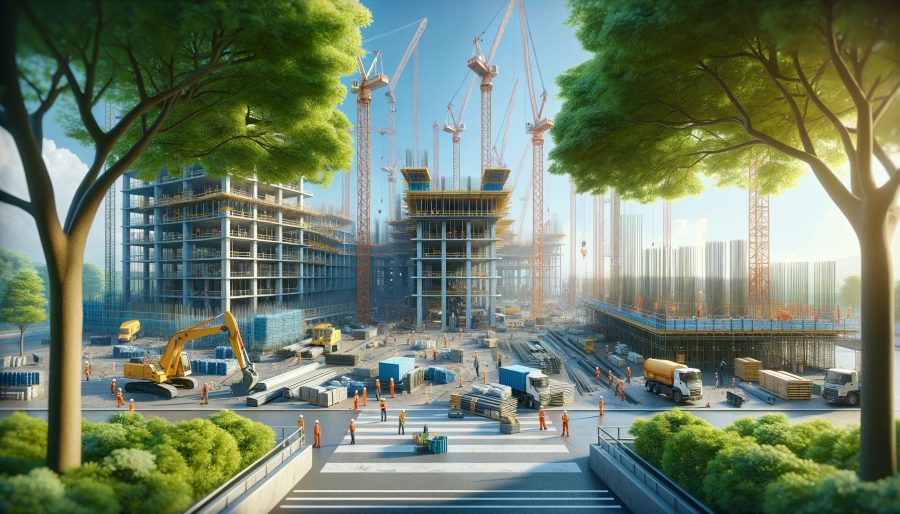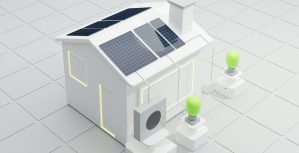8 Energy Efficient Methods That Will Make Concrete Construction Greener
The construction industry is at a critical juncture, facing the challenge of advancing development while preserving environmental sustainability. Concrete, as a cornerstone material in construction, plays a crucial role in this dynamic.
The environmental impact of concrete construction is significant, leading to substantial carbon emissions and extensive resource use. Nevertheless, advancements and methodologies are being developed to enhance the sustainability and energy efficiency of concrete construction.
This article delves into eight innovative methods, including cutting-edge technologies like Converge’s smart sensors, aiming to foster a more sustainable future in construction.
1. Utilizing Supplementary Cementitious Materials (SCMs)
SCMs such as fly ash, slag, and silica fume can replace a portion of Portland cement, reducing the overall carbon footprint of concrete. These materials are often by-products of industrial processes and contribute to waste minimization.
They also improve concrete’s durability and strength, making structures more resilient and less prone to environmental degradation.
Energy Efficiency Benefits:
- Decreased production of high-energy Portland cement, leading to lower CO2 emissions.
- Enhanced concrete properties reduce the need for repairs and replacements, conserving energy over the building’s lifecycle.
2. Adopting Green Concrete Mixes
Green concrete mixes incorporate recycled materials and industrial by-products, diminishing the demand for new, virgin raw materials. This sustainable approach maintains high quality and performance standards, making it a viable alternative for environmentally conscious construction.
Energy Efficiency Benefits:
- Reduced energy consumption in material extraction and processing.
- Lowered environmental impact from transportation due to the use of locally sourced, recycled materials.
3. Improving Concrete’s Thermal Mass
Concrete’s thermal mass can be harnessed to create more energy-efficient buildings. Structures designed to absorb and slowly release heat can maintain more stable indoor temperatures, significantly reducing the reliance on mechanical heating and cooling systems.
Energy Efficiency Benefits:
- Decreased energy usage for heating and cooling, leading to lower operational emissions.
- Enhanced occupant comfort with minimal energy input.
4. Water-Reducing Admixtures
These admixtures reduce the water content required in the concrete mix, which not only enhances the concrete’s strength and durability but also conserves water—a critical resource.
Energy Efficiency Benefits:
- Higher strength and durability reduce the need for energy-intensive maintenance and reconstruction.
- Conserving water reduces the energy used in water extraction, treatment, and transportation.
5. Carbon Capture and Utilization (CCU) in Concrete
CCU technologies capture CO2 emissions from industrial processes and incorporate them into concrete, transforming buildings into carbon storage solutions. This process not only sequesters CO2 but also improves the concrete’s strength.
Energy Efficiency Benefits:
- Direct reduction in greenhouse gas emissions.
- Enhanced material properties lead to longer-lasting structures, reducing the need for energy-intensive refurbishment or replacement.
6. Optimized Formwork Systems
Reusable and modular formwork systems minimize waste and energy use in concrete construction. Designed for multiple uses and easy assembly, these systems support sustainable construction practices.
Energy Efficiency Benefits:
- Reduced material waste and associated energy consumption in production.
- Enhanced efficiency in construction processes lowers overall energy use on site.
7. 3D Concrete Printing
This innovative method allows for precise placement of concrete, minimizing waste and optimizing structural designs for material efficiency. 3D concrete printing is set to revolutionize the balance between form and function in construction, steering it towards sustainability.
Energy Efficiency Benefits:
- Drastic reduction in material waste, leading to lower energy consumption in material production.
- Customized structural designs enhance efficiency, reducing the energy footprint of buildings.
8. Smart Sensors
Converge’s Concrete DNA and Signal sensor technologies offer a novel approach to concrete construction. These sensors deliver real-time data on the curing process, enabling precise, timely decision-making that boosts energy efficiency and curtails waste.
Sustainability Contributions:
- Real-Time Strength Monitoring: Optimizes construction schedules by reducing idle times, thus lowering energy consumption on sites.
- Material Optimization: Ensures concrete mixes are tailored for performance, minimizing unnecessary material use and waste.
- Lifecycle Insights: Offers valuable data for efficient maintenance and potential extension of the structure’s lifespan, conserving resources and energy over time.
Concluding Thoughts
Incorporating these energy-efficient methods into concrete construction not only addresses the urgent issue of climate change but also leads to more cost-effective, resilient infrastructure.
By adopting technologies like smart sensors or 3d printing for sustainable practices, the construction industry can markedly decrease its environmental footprint, paving the way towards a sustainable future.
These methods transcend mere mitigation of construction’s adverse effects; they reimagine concrete’s role as an integral part of the solution in combating climate change.
Share It on :





